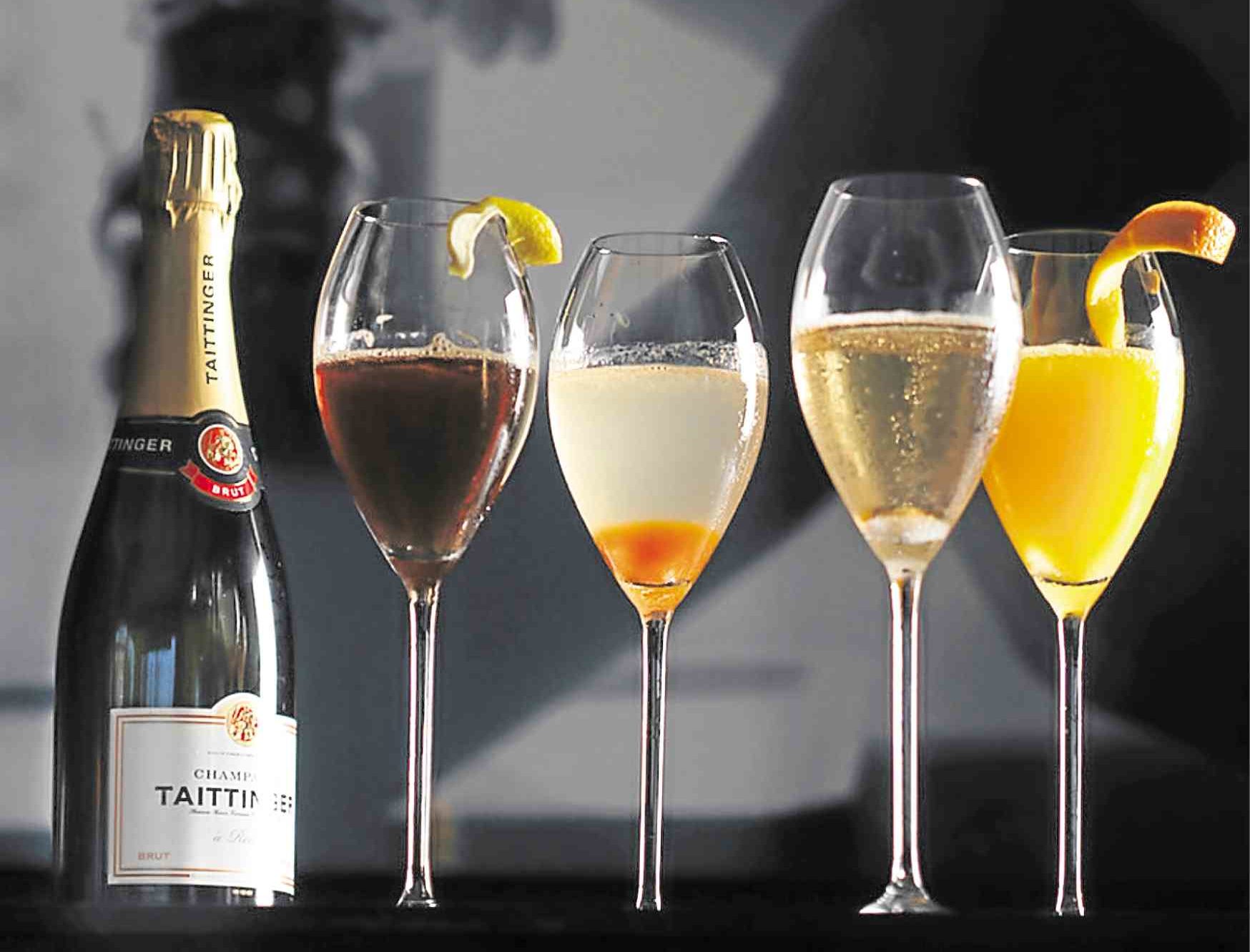Champagne for all seasons

Taittinger Champagne-pairing dinner at the Raffles’ French restaurant Mireio. —photo courtesy of Raffles and Fairmont Makati
Part of the pleasure of wine appreciation is learning about the history of the companies and the families behind the label. This week, I got to learn more about the champagne label Taittinger at a champagne-pairing dinner they hosted alongside Raffles and Fairmont Hotels.
By champagne-pairing, it means that all dishes, from the appetizers to dessert, were paired with Taittinger champagne.
Taittinger (pronounced tey-tin-jay) is a champagne house based in Reims, the unofficial capital of the Champagne wine-growing region. Nicolas Delion, director of Taittinger, proudly shares the brand is one of the last eponymous family-producing, family-owned and -managed champagne labels in the world, now run by the fifth generation of Taittingers.
The family has always been into wine: they were wine merchants who moved to Paris from Lorraine in northern France in the late 1800s. But they became champagne masters in the 20th century when, in 1932, Pierre Taittinger founded the Taittinger champagne house.
He bought the Chateau de la Marquetterie from the wine house of Forest-Forneaux, whose own Jacques Fourneaux in 1734 worked closely with the Benedictine Abbeys who, at the time, owned the finest vineyards in the region. The estate also later bought a large mansion previously owned by Theobald I of Navarre, who reportedly was the man who brought the first Chardonnay grape to France from Cyprus, upon his return from a crusade in the Middle Ages.
Today, the champagne house is run by the youngest generation of Taittingers with Pierre-Emmanuel Taittinger as head of business.
Nicolas shared the new generation always stressed that champagne was not just about luxury but also about fun.
Case in point: the bottle of Nocturne. This is a non-vintage champagne with a “higher dosage” so it is sweeter than, say, the Brut XV. Because of this extra sweetness, it is great to drink on its own but can also be appreciated—surprisingly—with spicy food. But the most interesting thing about the bottle is the way it was designed: it glows in the dark! Nicolas demonstrated this by putting the bottle atop his cellphone’s flashlight. They are evidently committed to communicating that champagne is not just bubbly but also fun and uber cool.
The more “serious” champagnes of the brand are all about balance. We had the pleasure of tasting their 2006 Blanc de Blanc, which is made only with Chardonnay grapes from the best vines in the prestigious Cote des Blancs. Even more “serious,” this is only produced when the harvest is of exceptional quality and deemed a vintage year. Given that these grapes must be handled with care, only the wine from the first press is used, with 5 percent of the wines aged for four months in new oak barrels. Then they would be aged for 10 years to achieve that balance and freshness that, Nicolas said, “clearly illustrates what amazing things you can do with the Chardonnay grape.” The blanc de blanc was my favorite drink of the night.
Nicolas, on the other hand, took great pleasure in the rosè. It was surprisingly paired with duck which, French Ambassador Nicolas Galey noted, would be considered “heretical” in some gastronomic circles. But the other Nicolas—Nicolas Delion of Taittinger—argued that when it is the peak of summer or if you live in a tropical country like the Philippines and can’t exactly have a bottle or even a glass of red at lunch, a rosè would be a great alternative. The Ambassador conceded that for a champagne-pairing dinner, where there are no red wines, the Prestige Rosè XV would be the best to pair with meat against all the other champagnes, especially with the beautiful tannins of this rosè.
Champagne is often considered a token drink for celebrations. But this dinner showed it can also be something you can enjoy more often. After all, in this new world run by millennials, the mantra is YOLO (you only live once) so maybe it’s time to celebrate—and drink champagne—not just on occasions but every day.
